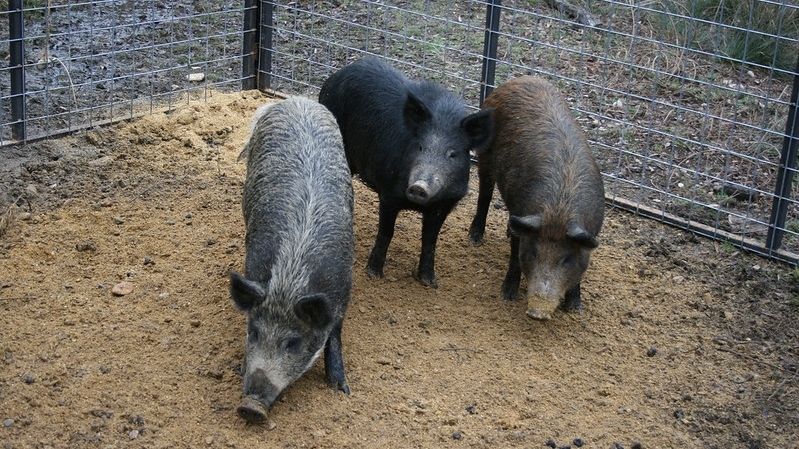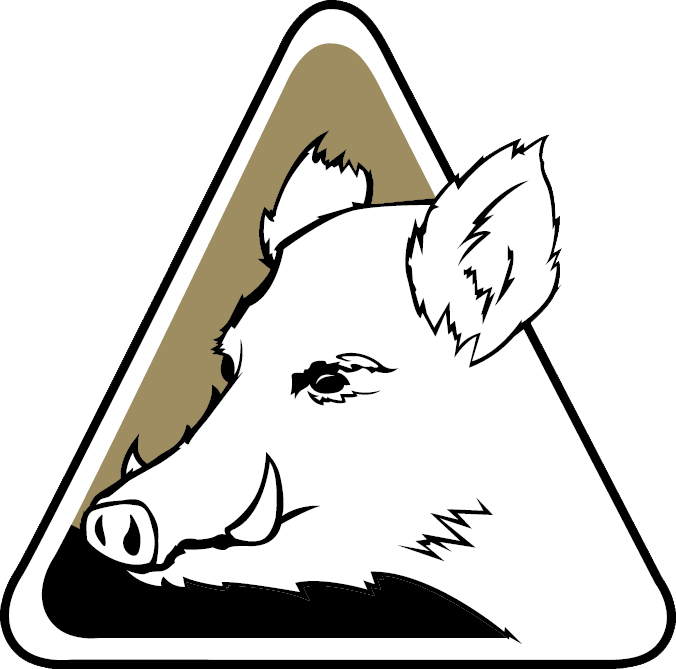
In response to the increasing damage and disease threats posed by expanding feral swine populations in the United States, Congress appropriated funds to APHIS in 2014 to create a collaborative, national feral swine damage management program. Congress continues to allocate funds annually to support the program.
The National Feral Swine Damage Management Program
The overarching goal of the National Feral Swine Damage Management Program is to protect agricultural and natural resources, property, animal health, and human health and safety by managing damage caused by feral swine in the United States and its Territories. To accomplish this goal, APHIS is working in cooperation with States, Tribes, other Federal agencies, universities, organizations, the public, and other stakeholders. APHIS also collaborates with Canada and Mexico to support border activities and facilitate an informational exchange on feral swine disease monitoring and control activities.
A Flexible Approach
Since environmental conditions and laws governing feral swine vary considerably among States, APHIS’ strategy is to provide resources and expertise at a national level, while allowing flexibility to manage operational activities from a local or State perspective. The overall objective of the program is to minimize damage inflicted by feral swine. APHIS implements activities to reduce problems associated with feral swine in most States where they are present. In States where feral swine are emerging or populations are low, APHIS cooperates with local and State agencies to implement strategies to eliminate them. APHIS also targets feral swine emerging in urban areas where they pose a danger to people and property. APHIS uses an integrated approach to feral swine damage management issues, incorporating the latest scientific research findings, improvements in field tactics, and communication and outreach tools to accomplish its goal.
Objectives
More specifically, APHIS has developed the following objectives with regard to feral swine damage management:
- Stabilize and eventually reduce the range and size of feral swine populations in the United States and Territories in accordance with management objectives of States, Territories and Tribes.
- Further develop cooperative partnerships with other pertinent Federal, State, Territorial, Tribal, and local agencies, and private organizations working to reduce impacts of feral swine to agriculture, natural resources, property, animal health, and human health.
- Expand feral swine management programs nationwide to protect agriculture, natural resources, property, animal health, and human health.
- Monitor feral swine for pathogens that affect domestic swine, other livestock, and human health.
- Develop and improve tools and methods to manage feral swine populations, including field tests to assess the efficacy for reducing risks to agriculture, natural resources, property, animal health, and human health.
- Develop predictive models for population expansion and economic impacts of feral swine, along with risk analyses to agriculture, animal health, and human health.
- Develop outreach materials and activities to educate the public about feral swine damage and related activities to prevent or reduce damage.
- Coordinate with Canada and Mexico to establish a collaborative plan to address the feral swine threat along the common borders, including monitoring, research and operational responses as appropriate.
Key Program Components
- Field Operations
- Disease and Population Monitoring
- Research
- Planning and Evaluation
- Communication and Outreach
- Regulatory Actions
APHIS Programs Involved
While the specific roles of external APHIS partner groups vary from project to project and evolve over time, within APHIS there are five units that are involved in implementing feral swine damage management activities.
Wildlife Services
Wildlife Services (WS) is the lead organization within APHIS to manage the wide array of wildlife damage issues that impact agriculture (plant and animal), natural resources, property, and human health and safety. WS personnel have extensive experience working with feral swine, including control practices, research to develop damage mitigation measures, and monitoring techniques to assess disease risk.
Veterinary Services
Veterinary Services (VS) is the lead unit within APHIS to manage the myriad of issues related to the health of domestic animals across the United States. VS personnel have extensive experience in mitigating animal health risks and documenting swine disease information for health protection and trade of livestock.
International Services
International Services (IS) is the international arm of APHIS. Their experience and capacity to address cross border issues related to foreign animal disease threats to domestic animals is essential in working with Canada and Mexico on the integration and education of feral swine damage mitigation management actions in the representative countries.
Legislative and Public Affairs
Legislative and Public Affairs (LPA) is the primary APHIS unit responsible for outreach and communication regarding feral swine damage management issues. They have extensive experience developing effective communications and outreach materials for a large number of partner and stakeholder groups, along with members of the general public.
Policy and Program Development
Policy and Program Development (PPD) is the lead unit in drafting the budget documents that accompany this plan as it moves forward. PPD personnel also have expertise in strategic planning, National Environmental Policy Act analysis, regulatory policy, and general performance monitoring of the broad strategic goals and milestones for the APHIS National Feral Swine Damage Management Program.



